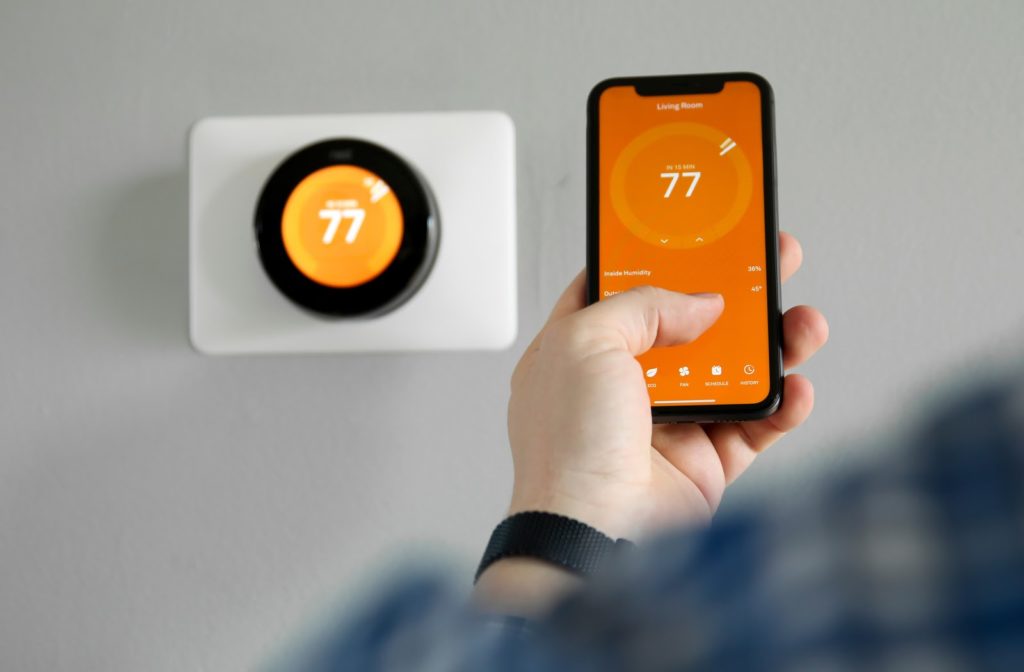Smart thermostats make controlling the climate in your home faster, more straightforward—and significantly cheaper than using a manual thermostat in the long run. But how do smart thermostats provide these benefits to homeowners, and what kind of smart thermostat should you buy if you live in Central California?
Lee’s Air has been serving Central and Northern California for over 40 years, so we know a thing or two about setting up efficient temperature control systems in these regions. Let us teach you more about smart thermostats and how they work so that you can make an informed decision about purchasing one for yourself.
What Is a “Smart” Thermostat?
Smart home technology is growing in popularity, which means an increasing number of companies are advertising their products as “smart” devices. However, it takes more than a few bells and whistles to earn that particular designation when it comes to thermostats.
Smart vs. Programmable Thermostats
Programmable thermostats differ from manual thermostats by allowing you to schedule different temperatures for your environment in advance. By doing so, you can potentially save money on your utilities by arranging for your home to cool during times when you’re not there and warm up just before you come back. It is estimated that programmable thermostats can save homeowners 10-30% on their heating and cooling bills.
However, programmable thermostats are not necessarily smart thermostats. For a thermostat to be considered “smart,” it has to use automated technology to reduce human error and improve energy efficiency for the environment where it is installed. As such, smart thermostats provide an advantage over programmable thermostats, which often fail to deliver meaningful savings if their owners forget to program them correctly.
Types of Smart Thermostat
Many smart thermostats are learning thermostats, which use sensors to collect information about your habits and preferences during use. These thermostats can then program themselves to balance user preferences with optimal energy usage. By contrast, many standard smart thermostats merely make suggestions instead of automatic adjustments, leaving more potential for user error to impact the savings they provide.
Some learning thermostats can determine:
- The most likely times for people to be at home
- How many occupants are present at any given moment
- The temperature preferences of the primary occupants
A growing number of smart thermostats are also WiFi thermostats, which allow users to access their settings remotely through mobile devices. WiFi thermostats are generally controlled through an accompanying app, which can also provide the user with valuable energy savings metrics and other diagnostic information.
How Can a Smart Thermostat Benefit You?
In general, smart thermostats can help their owners in the following ways:
- They reduce the risk of human error that comes with manual and standard programmable thermostats.
- They require less manual effort to operate and maintain than standard thermostats.
- They can save you more money on utility bills than manual or standard programmable thermostats.
- As popular pieces of smart home technology, they can help increase your home’s resale value.
Our Recommendations for Smart Thermostats
Ecobee
Calling Ecobee’s latest offering a smart thermostat almost feels like an understatement because this product has so many advanced features that it’s practically a smart home controller. Not only does the Ecobee offer dual-band WiFi and Bluetooth connectivity to other smart devices in your home, but it also has built-in speakers and a microphone—allowing you to stream audio, talk to virtual assistants like Siri and Alexa, or even have phone conversations. As far as thermostats go, we think that’s pretty cool.
Of course, we can’t forget to talk about how the Ecobee performs when it comes to climate control. One of the best features this thermostat offers is the ability to link up with modular sensors you can place throughout your home. Doing so allows the Ecobee to learn about your preferences and usage habits for individual rooms and adjust the temperature accordingly for maximum comfort and energy savings. At approximately $330 for the full version, it’s not cheap—but as the saying goes, you get what you pay for (and with this thermostat, you get a lot).
Ecobee thermostats als come with a warranty, which is why the Ecobee thermostat is usually what we recommend to our customers.
Nest
Nest has been the most recognizable name in smart thermostats for a while now. The latest version of the Nest smart thermostat sells for $130, and they also offer a learning version for about a hundred dollars more.
Nest’s offerings might seem expensive, but these products offer plenty of other attractive features to justify their price tags. Both current Nest products provide remote control through the Google Home app, allowing users to create custom “scenes” involving multiple pieces of smart home technology. For example, you could use a single command (such as “good night”) to adjust your thermostat automatically, turn off compatible smart lighting products throughout your house, and activate the smart lock on your front door.
Smart Thermostats Offer Value to Smart Homeowners
Smart thermostats are evolving to offer an expanding number of useful features while becoming increasingly effective at optimizing our energy consumption.
Investing in a high-quality smart thermostat today can save you money tomorrow and make it easier to maintain a comfortable temperature in your home right now. At Lee’s Air, we also offer rebates for all new smart thermostat installations.

